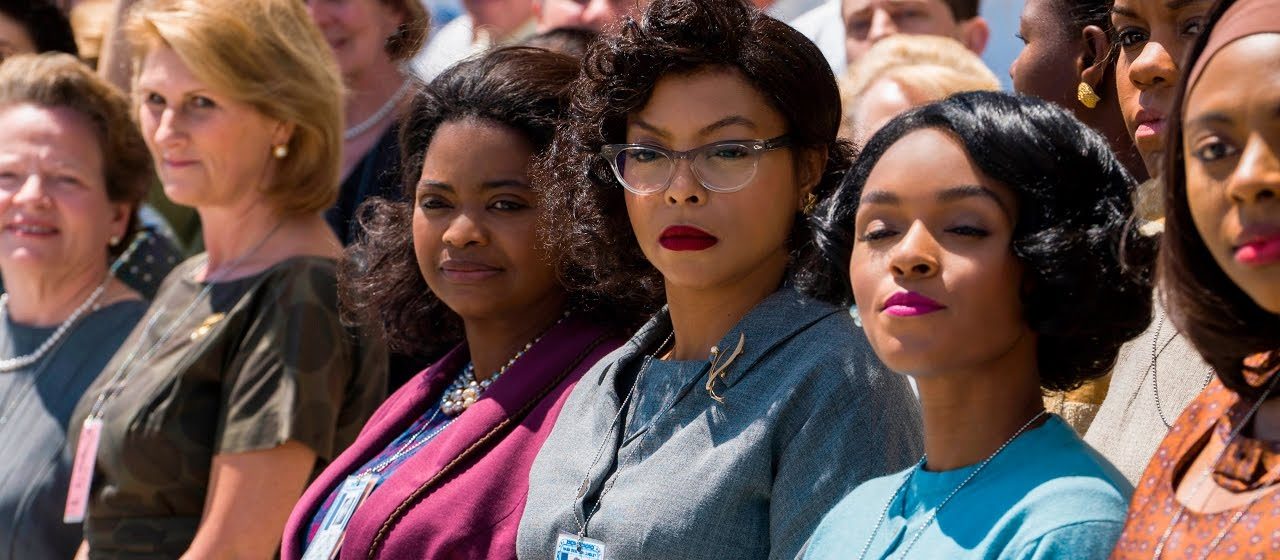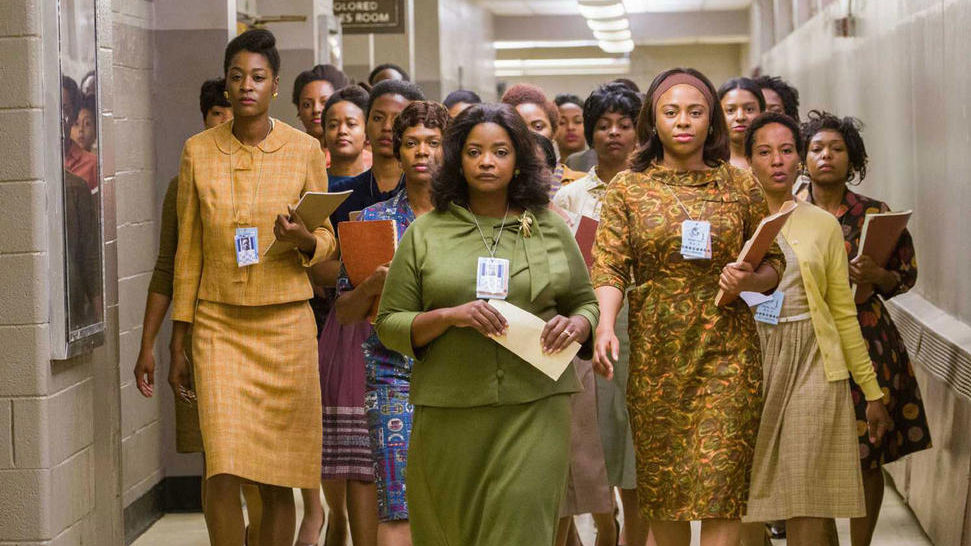

“Here at NASA we all pee the same color.”
During the Space Race between the USSR and the United States in the 1960s, the NASA engineering department was primarily composed of middle-aged white males. There was a peripheral department of African-American women, known as “computers,” who checked the calculations of the engineers and helped ensure that hurtling tons of metal into space would be done as safely as possible. Hidden Figures was commissioned prior to Margot Lee Shetterley’s nonfiction book reaching completion, and hit theaters only a few months after the book hit the shelves. Though the film is based on true events and depicts real people, it’s apparently not very historically accurate.1 It mashes the sprawling timeline into a neat and tidy year or so of elapsed time in the film, and leans into dramatic angles that didn’t necessarily exist in the same way they are depicted in the film. That being said, all of those choices make Hidden Figures a better film, if we consider that its aim is to uplift rather than to convey a history lesson. It follows a very standard dramatic arc that only snobs like me would stick their noses up at, but is carried effortlessly by three great performances from its trio of leading ladies.
To be clear, the story is incredibly moving and succeeds in its narrative goal of making the viewer feel good. Just because I look at that aim cynically does not mean that I’m immune to its effect. Katherine Goble (Taraji P. Henson) was evidently a genius from a young age. Her family packed up and moved when she was only a few years old so that she could have the best education possible and make something of herself. At the time, though, much of America was still segregated. So while she became employed at Langley, and her nose for numbers landed her a role in the effort to get John Glenn (Glen Powell) into orbit, she found herself jogging in high heels across the campus to use the colored restroom and drinking from a coffee pot that was set up just for her. The fictional composite character of Al Harrison (Kevin Costner), director of the Space Task Group, eventually berates her for leaving her desk for forty minutes twice each day. This causes a huge outburst that leads to Harrison tearing down the bathroom signs and other people serving Katherine coffee. It should be noted, though, that although her colleagues come to accept the fact that a colored woman is now part of their team, they also come to respect her stellar number crunching and strong work ethic.

The main narrative arc of the film is about Katherine, but two of her friends and fellow NASA employees also make history in the margins of the story. Mary Jackson (Janelle Monáe) has ambitions of becoming an engineer at Langley and goes to court so that she can take night classes at an all-white high school and get the necessary credentials.2 Dorothy Vaughan (Octavia Spencer), meanwhile, spends most of the film performing the role of supervisor without being granted the title or compensation commensurate with her efforts. When she learns that NASA will be installing an IBM 7090—a huge clunky computer that nevertheless threatens to make human computers obsolete—she learns the system in her off-hours and trains her computers to code using the Fortran language, earning herself a promotion to supervisor of the programming department and saving the livelihoods of her entire team.
Even less attached to the main narrative is Jim Johnson’s (Mahershala Ali) tacked-on courtship of Katherine, a single mother of three children. Despite the scenes clashing with the rest of the film, I actually would have preferred if more attention was given to this angle. At the time of the film’s release, both Katherine and Jim Johnson were still alive, and they had been married for nearly sixty years. This fact and evocative acting by Henson lent a large amount of weight to the touching family moments.

Without fully committing to highlighting the true harms of the racial tension of the era (the film is rated PG), it’s probably sufficient to view Hidden Figures as a mere vehicle for bringing the story of these women to a wider audience and making it palatable for the masses. That is to say, it’s not really doing much that warrants revisiting and Theodore Melfi’s direction is competent but unremarkable. (If I have the mind to re-immerse myself in the story in the future, I’d be more inclined to read the book.) But what ultimately makes the film better than a mere feel-good drama is the acting. Henson is versatile, Spencer is a quiet force, and Monáe is a defiant go-getter with an attitude. But all three are usually very good, and they’ve been in better films than this.
From the moment you perceive the general premise of Hidden Figures, you can predict the basic trajectory of the plot and its happy ending. Being a sucker for space-related films, I find that all of the artistic liberties don’t really bother me. To me, these changes are akin to Al Reinert mixing footage from all six successful Apollo missions and some from a Gemini mission and presenting it as a single trip in For All Mankind. But unlike that film, Hidden Figures is largely by the numbers, without much to recommend it by unless you’re just in the mood to watch an uplifting drama that lightly addresses issues of racial tension and gender stereotypes.
1. I haven’t read the book to compare, but I’ve read several articles comparing real life events to the movie. It seems that much of the drama would be sucked out of the film if it portrayed everything accurately. The timelines and tensions as told by Shetterly just don’t really lend themselves to a two-hour crowd-pleaser, as compelling as they may be in written form.
2. Just to illustrate the dramatic license used in the film—Mary Jackson did not go to court, but instead merely asked for and was granted an exception. She received her degree and was promoted to an engineering position several years before the main events depicted in the film occurred.
Sources:
History vs. Hollywood: Hidden Figures. History vs. Hollywood. 2017.